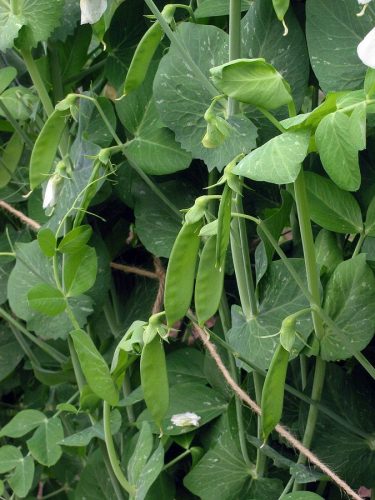Snap peas are related to peas, but snap peas are an edible-pod p
Also known as:
Sugar snap p
You are viewing the mobile-adapted version of the page.
The one for tablets, laptop and desktop also provides general information, such as origin and cultivation.
Snap peas (Pisum sativum) are related to peas, but snap peas are an edible-pod p
Remove fungus-infested leaves or pods. Harvest when the flowers have bloomed. The timing is pretty close; if you wait too long, the pods will get thick and will no longer be ‘eat all’ pod. The peas in the pods can then be harvested as peas; the pods have become fibrous and are no longer tasty.
Edible-pod peas – ‘all eat’ – mangetout
Some peas lack the tough membrane inside the pod wall like garden or field peas and have tender edible pods. There are two main types:
Snow peas have flat pods with thin pod walls. Pods and seeds are eaten when they are very young.
Snap peas or sugar snap peas have rounded pods with thick pod walls. Pods and seeds are eaten before maturity.
The cultivation of snow peas and snap peas is the same.
Bugs
Eaten young peas: pea weevil (Bruchus pisorum).
Strong (bearded) growth of lateral roots, delayed growth: Beet cyst eelworm (Heterodera schachtii, Heterodera betae).
Fungi & diseases
Brown spots with gray fungus: gray mold (Botrytis cinerea).
Other
Seeds are dug up: birds, mice.
Harvest is eaten away: birds (pigeons).

